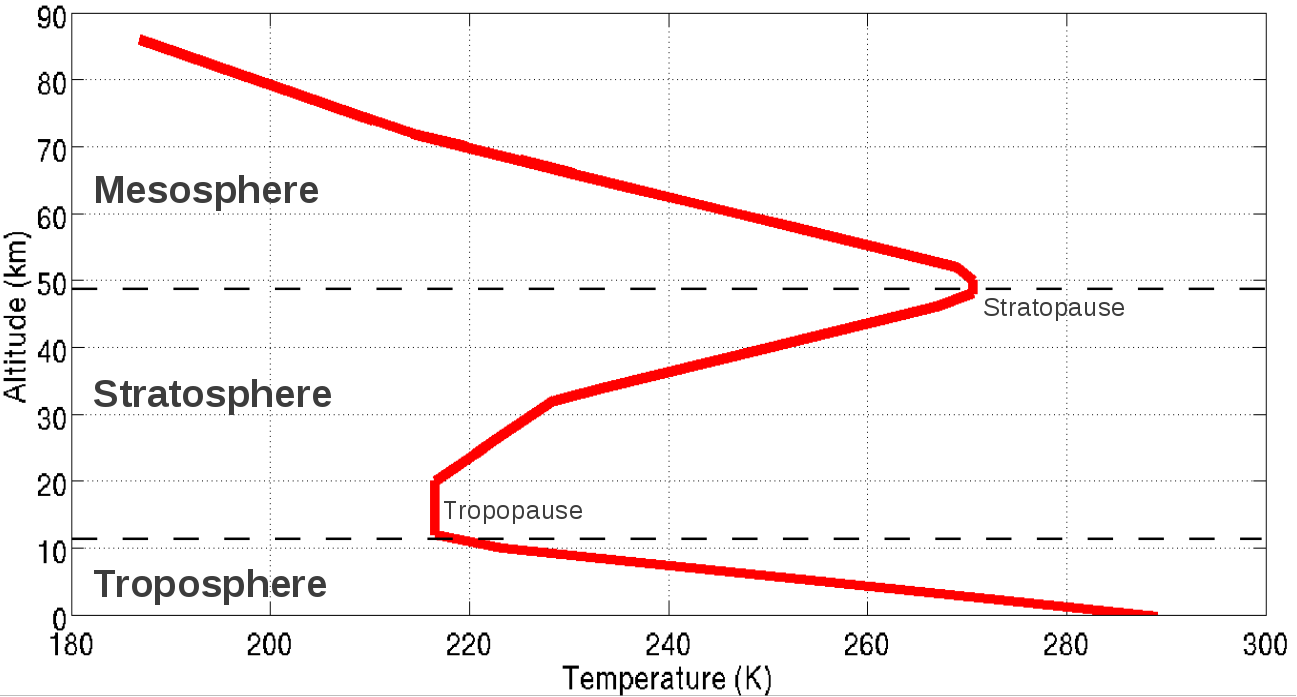Atmosphere Basics:
The atmosphere makes life on Earth possible. It shields us
from harmful extra-planetary ra-
diation; it moderates the surface temperature of the planet and
insulates us from the diurnal
solar cycle; it allows for a common, well mixed reservoir of gasses
from which organisms can
cycle necessary chemical compounds; and it provides a medium for the
long range transport
and circulation of water. It is important to study the atmosphere
in order to understand our weather and climate.
Temperature:
The atmosphere can be divided into different zones based on
the way that the temperature changes.

[US Standard Atmosphere - A.J. Krueger]
The troposphere is the lowest
region extending from the surface of the
planet up to nominally
10 km altitude and it is characterized by decreasing temperature with
height, convective and turbulent mixing,
and an abundance of water vapour. It is also the region of the
atmosphere that we associate withour day-to-day weather.
The stratosphere is the region directly above the tropopause and
extends to roughly 50 km
altitude. The region gets its name from the stably stratified (layered)
nature of the temperature profile.
Whereas the troposphere got colder with height, the stratospheric
temperature profile
increases with increasing altitude due to the presence of ozone. This
happens beause the
ozone molecule, O3 , absorbs incoming ultraviolet solar radiation and
redistributes a portion of
the energy as increased temperature.
